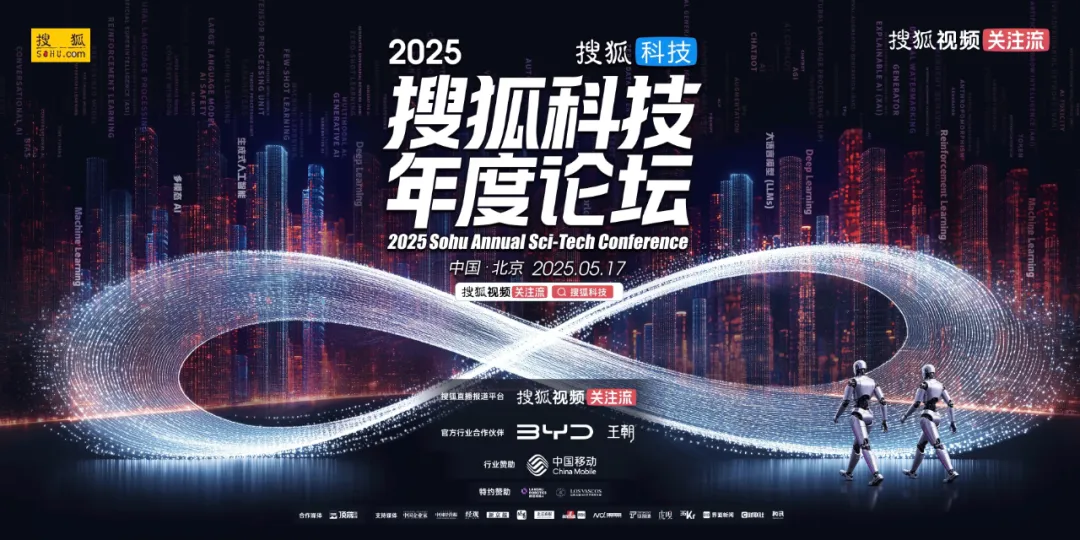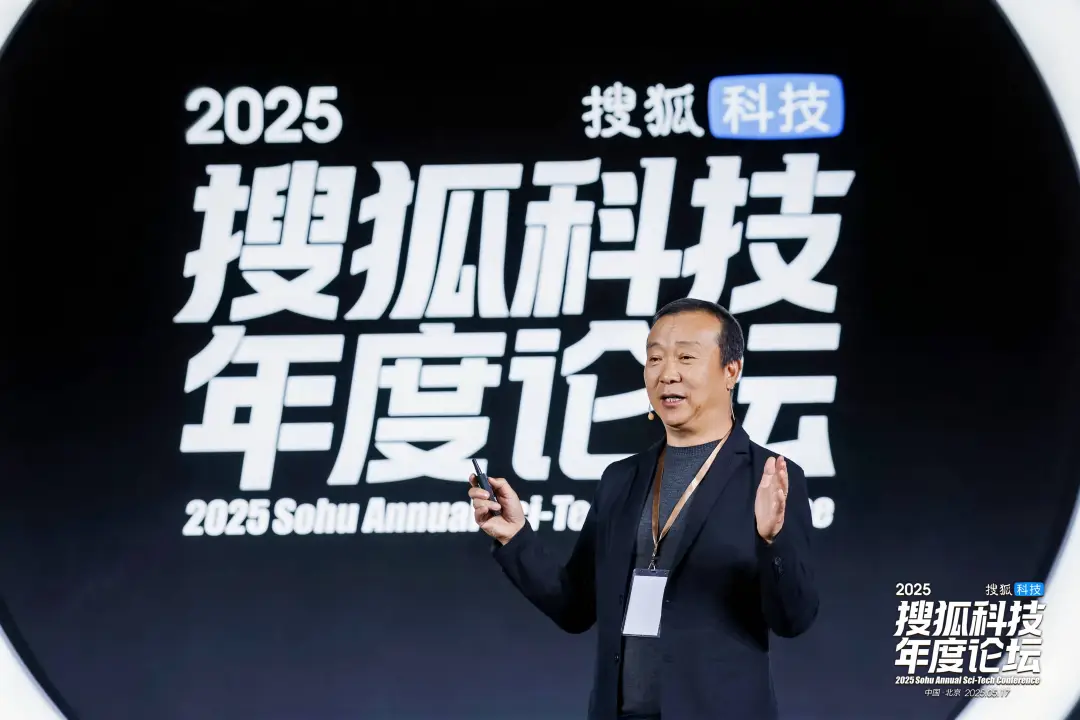
On May 17, the 2025 Sohu Technology Annual Forum hosted by Sohu opened grandly in Beijing. Many academicians, scientists and industry professionals gathered together to stimulate the deep collision of wisdom and rush to the stars and sea of science and technology.
This forum combines online and offline activities, opening a full-day feast of ideas. In the afternoon session, Sun Lijun, former vice president of the Beijing Film Academy and dean of the Chinese Animation Research Institute of the Beijing Film Academy, delivered a keynote speech on “AI Image Art”.

Sun Lijun, former vice president of Beijing Film Academy and dean of the Chinese Animation Research Institute of Beijing Film Academy
Sun Lijun shared with everyone from the perspective of a film educator what impact computer animation and computers have had on artistic creators in the AI era.
Sun Lijun said that although the “AI fever” has attracted widespread attention and public thinking, many artists in art schools are very resistant to AI. The main reason is that they believe that AI does not understand emotions, has no artistry, and lacks personality.
Today I would like to talk to you about the impact that computer animation or computers have brought to us, especially in the era of AI, from the perspective of a film educator and a creator with 40 years of experience.
Sun Lijun said that from “Havoc in Heaven” in the 1960s, to the completion of the world’s first 3D animation in 1995, to the controversial AI short film “The Crow” today, at each stage, the most debated issue among artists is the boundary issue, whether humans are dominant.
In Sun Lijun’s view, the cultivation of artistic talents is an unknown, but one thing is that teaching students in accordance with their aptitude and teaching based on their interests is more important. In the AI era, the education and cultivation of artistic talents must face the challenges of breaking through the boundaries of traditional disciplines.
In this regard, he said, “We must embrace the AI era. We must make friends with it, not make enemies, let alone be irrelevant to it. At the same time, in the AI era, we should pay more attention to social responsibility and our responsibilities, rather than simply emphasizing the head-up rate in the classroom. We should better enable them to tell the Chinese story well in this opportunity period and tell the excellent Chinese story to the world.”
The following is the original speech (abridged version):
Today, when I was sitting in the audience in the first half, I listened to many experts from the technology field sharing their experiences. I mainly came here to provide some experiences in artistic creation.
Because AI has arrived, it allows those of us who are engaged in art to chat with scientists who are engaged in technology, especially computer development.
Since last year, AI fever has lagged behind in art schools. Although we are all thinking about it, many artists are very opposed to AI, thinking that it does not understand emotions, it has no artistry, and lacks personality. Of course, I think the reason why I am willing to stand here and share with you is that my views are different from theirs.
In 1997, the Beijing Film Academy bought the only three motion capture machines in Asia. The other two were purchased by a Japanese game company. I also participated in the use of this equipment as a witness and learner.
Today I would like to talk to you about the impact that computer animation or computers have brought to us, especially in the era of AI, from the perspective of a film educator and a creator with 40 years of experience.
We are proud of the “Havoc in Heaven” from the 1960s, which was shot frame by frame on film and celluloid. In 1995, the world’s first 3D animation was completed, and the award-winning and controversial short film “The Crow” is an AI short film.
After going through these stages, the most debated issue among artists is the boundary issue, whether it is dominated by humans. This video can be seen online. The advancement of technology has made many creations expand the traditional boundaries. For example, movies are usually said to be performed by real people, and animations are drawn. After the emergence of AI, my first point of view to share with you is that this boundary will be broken, which has caused a lot of controversy. In the art world and the film creation world, does the so-called style still exist? My answer is, of course it does.
After the emergence of AI, why do famous people in our field of artistic creation, especially those who are particularly famous, reject it? It is commonly known as AI sickness. AI is very fast and can create a lot of content, but it always feels like pre-made dishes, all the same.
In the past two years, I have visited excellent AI companies. After watching the demos they provided to me, I also had this feeling. For example, they were able to make Van Gogh’s painting “Burning Sunflowers” look like Cézanne’s style. Why? They did not really study these artists, but just trained the model and thought it was. There are also some who do not understand or do not know much about the content. We mentioned the difference in aesthetics.
There are many examples of these technological changes internationally, such as how to replace heavy and repetitive manual labor and how to improve efficiency, but the images we see are all dominated by Western aesthetics.
Our own AI team faced this problem when they first came out with their models. This is about how Chinese scientists and artists face the challenge of AI and how to truly tell the story of China’s outstanding art and culture on the world stage.
As you all know, we are also working on some domestic and original movies, and we also want to try to use AI to lead them. But AI today cannot achieve the kind of character that movies require, such as the protagonist, that looks like a person.
What it brings to our mind in terms of talent cultivation:
Classroom content, classroom teaching, and classroom cases are not the most cutting-edge technological issues. It is precisely in the AI era that we need to think about the underlying cultural issues.
Thoughts on the future development of imaging, what is the core of cultivating artistic talents?
First, the unique innovation of human beings. If there is no innovation, but only imitation and repetition, industry can completely solve this problem. Especially in art and culture, innovation is very important for us humans to move forward. Professor Yaqin said that AI, especially general artificial intelligence or strong artificial intelligence, will kill 99% of ordinary people. I think the 1% that will remain must first be innovative. The first thing to cultivate artistic talents is also innovation.
Second, aesthetic ability. I just shared with you that when my team was doing a lot of experiments and practices, it was very important to solve the problem of aesthetic ability, that is, how to modernize the excellent traditional Chinese culture. This is what I am very concerned about now.
Third, the ability to accomplish. We cannot just do a show, we need to enter the industry and how to serve the entire industry and society and make it produce good economic benefits. This is what we have to face now.
In talent cultivation in the AI era, we have to face the fact that the boundaries between traditional disciplines, such as film and television, or animation and film, will be broken. This is something that education must face.
In the AI era, the cultivation of artistic talents is still unknown, but one thing is that teaching students in accordance with their aptitude and interest is more important. From my perspective on the cultivation of artistic talents , I think the biggest challenge facing Chinese education now is the transition from “I have to learn” to “I want to learn”. Because the arrival of AI will give our students more information on what to learn and why to learn these things. If there is no interest in studying courses or majors, it is meaningless to get a high degree.
The cultivation of artistic talents in the AI era has ushered in diversity. Due to time constraints, I will not play the entire film for you. This film is about 8 minutes long and has won numerous awards at home and abroad.
What are foreign counterparts doing at this time? I participated in a research project demonstration at the National Animation Center in the UK. Their experts asked the most, who owns the copyright? In the AI era, there must be a “new copyright law” in the AI era. If not, it will prevent human civilization from moving forward. It’s hard to say. We have no baggage. Last year, I led nine classmates to do AI painting generation. Almost none of them could reach my style. What was generated was more European, American and Japanese style.
As a Chinese teacher, in terms of cultivating artistic talents, I must include China’s excellent art and culture into the world’s database, so that our young students will be aware of how to present China’s excellent things in our works when facing the future.
From an artistic perspective, I would like to say that humans must be vigilant about the emergence of general artificial intelligence or strong artificial intelligence, because if a bad guy masters the main technology, he may destroy our human race.
There are many things I want to say today. After all, I have been engaged in art for 40 years. As I said at the beginning, I started to learn computer graphics and animation in 1991. I first learned about motion capture in 1997. Later, I have been engaged in front-line creation, so I have experience. My view on talent training is that we must embrace the AI era, we must make friends with it, not make enemies, and we must not be indifferent to it. Second, in terms of talent training, we should pay more attention to social responsibility and our responsibilities in the AI era, rather than simply emphasizing the head-up rate in the classroom. We should better enable them to tell the Chinese story well in such an opportunity period and tell the world the excellent Chinese story.
Thank you everyone!

